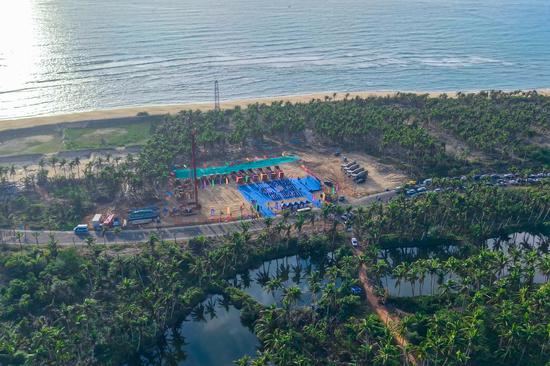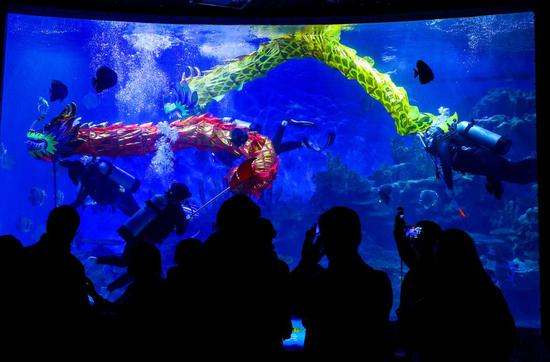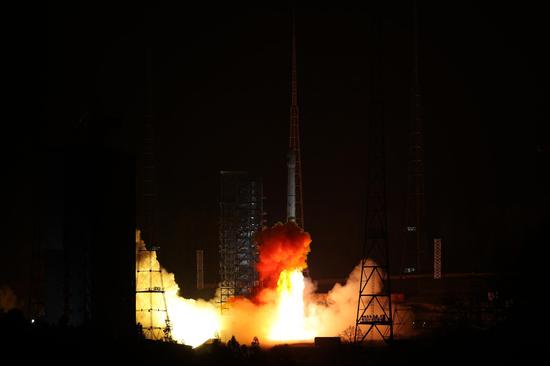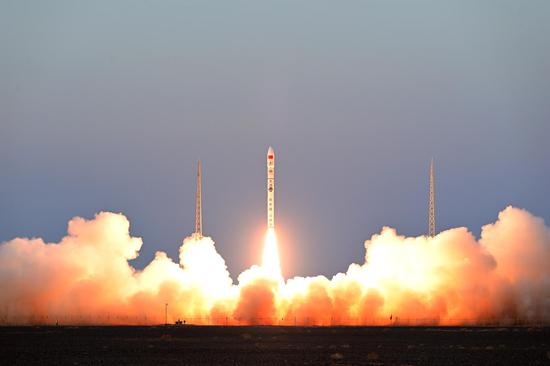Chinese scientists have deployed several prototype detectors to locate neutrinos in the South China Sea, the Institute of High Energy Physics under the Chinese Academy of Sciences announced on Wednesday.
The detectors were successfully placed at a designated site 1,600 meters below sea level, marking a key technical step in the development of the prototype array under the Sea Star Program, which is funded by the Ocean University of China. The project will provide technical evaluations for the High-energy Underwater Neutrino Telescope, a large-scale scientific instrument proposed by IHEP with an expected volume of about 30 cubic kilometers.
The prototype detectors are part of HUNT's preparatory phase, which aims to cover 600 square kilometers of ocean. The project is expected to detect neutrino point sources within two years and identify dozens of astrophysical neutrino sources within a decade, positioning China at the forefront of neutrino astronomy, said Chen Mingjun, a researcher at IHEP.
In addition to its astronomical significance, HUNT is expected to provide a valuable research platform for marine science, he added.
HUNT aims to detect galactic and extragalactic high-energy neutrino sources in a short period.
"Composed of highly energetic particles, cosmic rays' direction of motion is constantly deflected by interstellar magnetic fields, making it difficult to directly observe their origin," Chen said.
"Observing high-energy neutrinos, which can travel vast distances without being affected by magnetic fields or matter, is an effective way to uncover the processes and sources behind these highly energetic particles — an enduring mystery for more than a century," he added.
However, this same characteristic makes detecting high-energy neutrinos extremely challenging.
Current international experiments, developed over decades, are limited by detection technology and financial investment. The effective volume of their detectors remains between 1 and 8 cubic km, which may not be sufficient to identify high-energy neutrino sources, particularly galactic neutrino sources, Chen said.
According to IHEP, the South China Sea is China's only viable site for the telescope due to its vast expanse.
The deployment of the detectors was assisted by China's first deep-sea multi-functional scientific research vessel, Tansuo 3, and the Shenhai Yongshi, a 4,500-meter-class manned submersible owned by the Institute of Deep-sea Science and Engineering under the Chinese Academy of Sciences.
The detector prototypes were jointly developed by the Ocean University of China, IHEP and the Institute of Acoustics under the Chinese Academy of Sciences. The deployed detectors have also been successfully connected to the South China Sea Seabed Scientific Observation Network, another major national scientific infrastructure project led by the Institute of Acoustics.


















































 京公網安備 11010202009201號
京公網安備 11010202009201號